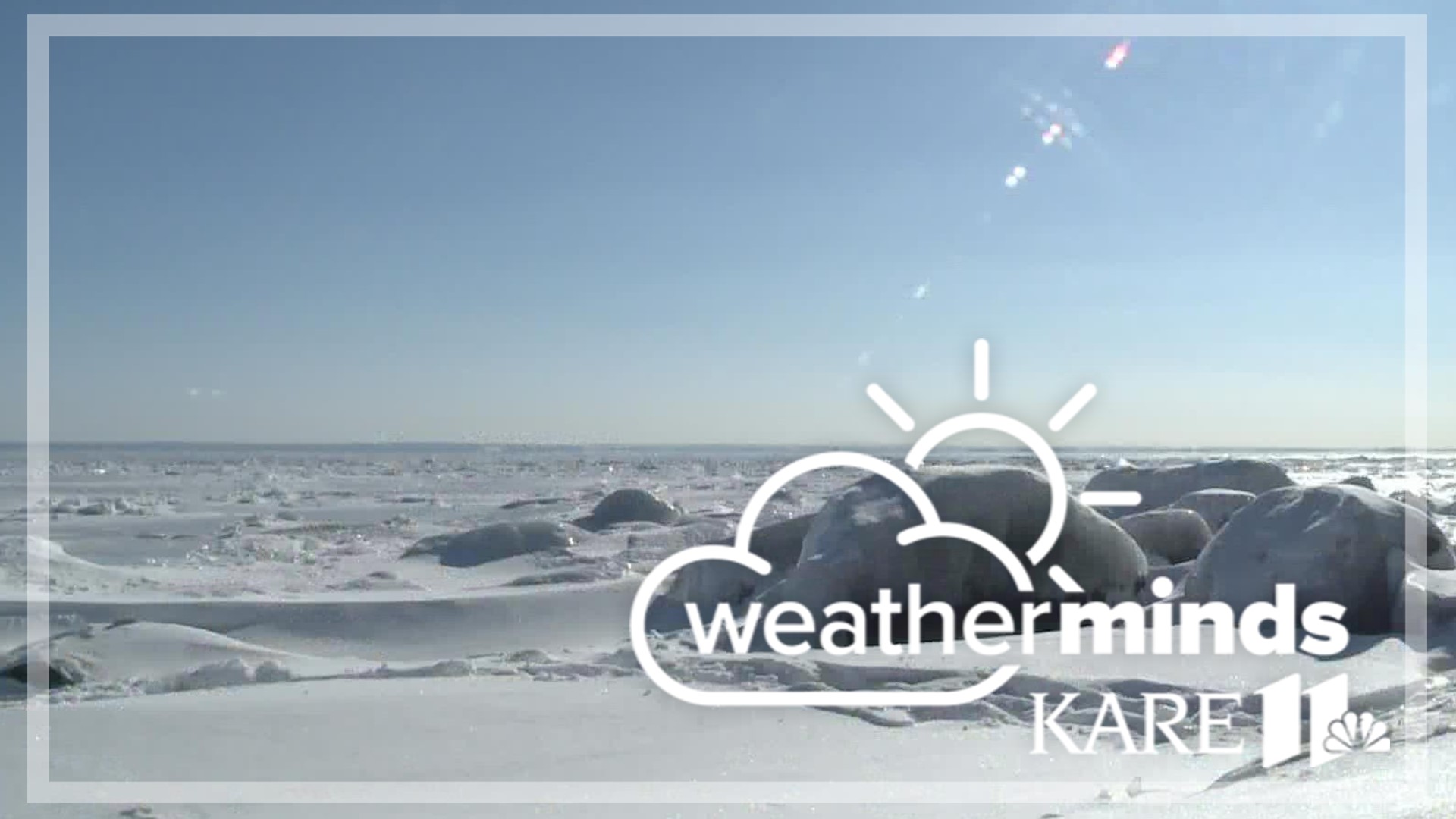DULUTH, Minn. — If you can brave the cold conditions, a trip to Lake Superior in the winter is a great time to see how ice and freezing temperatures impact the landscape of the North Shore.
One of the seasonal phenomena often found along Lake Superior's shoreline is stacked or shelf ice.
There are a few ways ice can be shoved or stacked along the shoreline of a lake or large body of water.
One is when ice breaks into smaller pieces due to melting or wave action, and strong winds push the ice ashore, leading to enormous stacks of ice along the shoreline.
When the ice sheet starts to melt along the shoreline it becomes free to move, and again... winds can drive that ice sheet toward the shoreline, which then breaks apart and stacks up as it comes ashore.
Another way for ice to shove its way ashore is for it to repeatedly expand and contract due to temperature fluctuations. As air temperature falls, ice will contract and form stress fractures (cracks) that fill with water and freeze. When air temperatures rise, the ice will expand. After enough cycles of expanding, contracting and growing, the ice sheet will reach the shoreline and starts to exert force, which can lead to shoreline damage.
Large bodies of water (like Lake Superior) have a greater surface area for ice formations and wind to act upon, making it a great location for ice stacking.
If you have a trip up north planned this season, it's important to be aware of ice conditions and ice safety. According to the Minnesota Department of Natural Resources, people should stay off of piled-up ice chunks and ice shelves.
"Because the ice was not created uniformly, the thickness can vary greatly, and large pockets of air often fill the ice. Unsuspecting victims can fall through an air pocket into open water, which may be two or more feet below the surface of the ice," the DNR says.
Clear ice is the strongest and safest ice. White ice occurs when snow melts on top of a sheet of ice and refreezes, making it only about half as strong as new, clear ice. However, ANY ice is never 100% safe. The DNR says to stay off ice that is less than 4 inches thick. Click here for more information on ice thickness guidelines.
Watch more WeatherMinds:
Watch the latest deep-dives and explainers on weather and science in our YouTube playlist:

